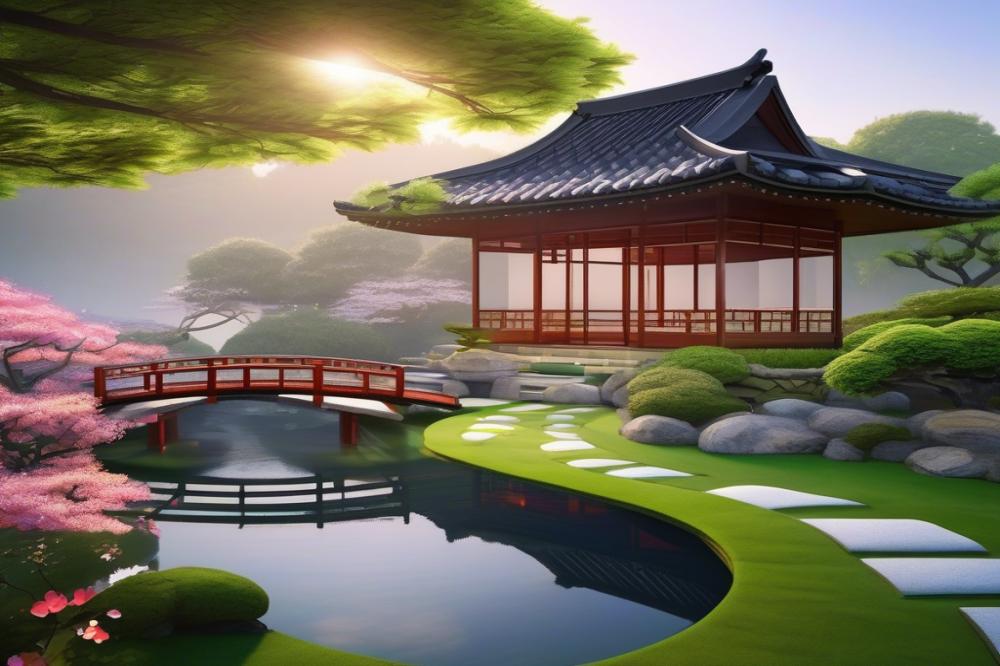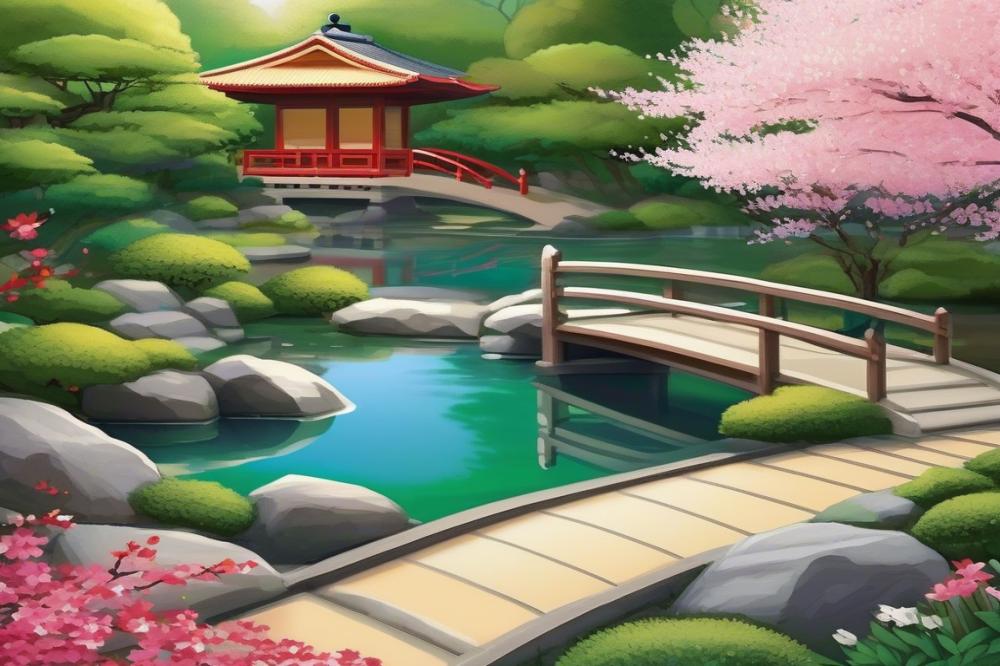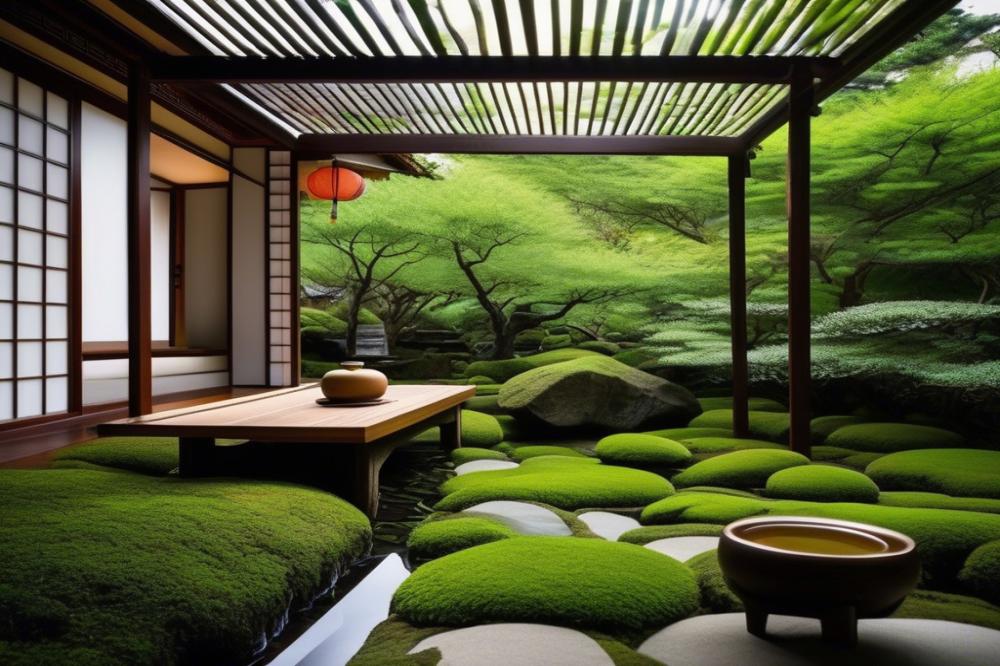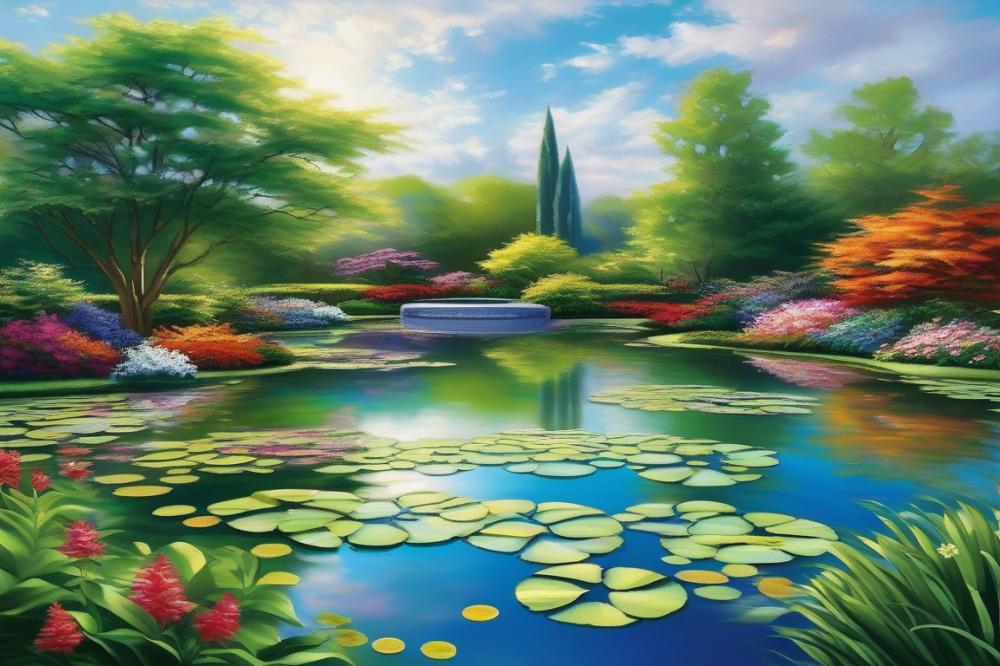Understanding Tea Gardens and Their Role in Meditation
Tea gardens have a special place in Japanese and Zen culture. They are more than just a collection of plants; they represent a harmony between nature and human intention. To many, these gardens embody peace and serenity. The process of growing and enjoying tea is intertwined with mindfulness practices. Each element of a tea garden plays a key role in encouraging tranquility.
Connection between tea gardens and meditation is profound. In Japan, tea ceremonies are deeply spiritual events that involve careful attention to each movement and detail. The atmosphere of a tea garden enhances the experience, allowing participants to immerse themselves in calmness. This focus on nature helps individuals reflect and find inner peace. When choosing designs, aspects like plants, water features, and pathways contribute to creating a meditation space.
Designing your own tea garden provides a unique opportunity to engage with nature. Aromatic herbs and various plants can stimulate the senses, deepening one’s experience. Thoughtful garden layout not only promotes relaxation but fosters mindfulness. Every corner can be crafted to inspire moments of reflection. Comfortable seating allows for quiet contemplation, while meandering pathways encourage a leisurely exploration of the space.
The goal of this article is to guide you in crafting a tea garden design that emphasizes meditation. Each step will help cultivate an environment where you can embrace tranquility. Ultimately, the essence of a tea garden lies in its ability to refresh the spirit and mind in a fast-paced world.
Understanding tea garden design


Tea garden design involves creating a special space where people can relax and connect with nature. Each element plays a significant role. From various plants to calming pathways, every detail matters. The goal is to foster a sense of peace and mindfulness. This garden becomes a refuge from everyday chaos.
The philosophy behind the layout of Japanese Gardens is rooted in harmony. Balance is essential. Designers prioritize the arrangement of natural features to create a tranquil setting. Every rock, water feature, and plant is thoughtfully placed. This care promotes a feeling of Zen, encouraging contemplation and relaxation.
Plants are more than decoration in tea gardens. They bring life and color to the environment. Aromatic herbs can stimulate the senses, enhancing the experience. Soft foliage and vibrant flowers can lift spirits. Selecting the right trees, shrubs, and flowers is essential for a soothing atmosphere.
Water features add an important dimension to the garden. The sound of flowing water can be incredibly calming. Small ponds and fountains not only beautify the space but also support wildlife. Insects and birds can invite joy into the surroundings. These elements connect people more deeply to nature.
Pathways guide visitors through the space. They invite quiet strolls and provide an opportunity to reflect. A well-planned path will gently lead one through the garden, revealing new sights along the way. Materials like stepping stones or gravel produce soothing sounds underfoot. Consider adding seating along the trails for moments of rest.
Seating is vital for meditation. A simple bench or a series of stones can enhance the experience. Choose comfortable spots where one can sit and simply be. Allow space for thoughts to flow freely. This contributes to the overall ambience, making the garden welcoming and peaceful.
Creating a tea garden is an artistic endeavor. It serves the purpose of inviting stillness amidst the movement of life. When every component aligns with the vision of tranquility, the result is a harmonious environment. Balance resonates throughout the space, turning it into a personal sanctuary where mindfulness thrives and nature shines.
Selecting the Right Plants


Creating a tea garden for meditation relies heavily on the choice of plants. Aromatic herbs play a crucial role in enhancing the overall experience. Imagine sitting in a space filled with the sweet scent of chamomile, mint, or lavender. These herbs not only smell wonderful but also promote relaxation.
Consider incorporating seasonal plants. You want your garden to have continuous color and fragrance throughout the year. Spring brings vibrant blossoms, while summer offers a lush, green backdrop. Autumn can introduce warm tones, and winter may surprise you with evergreen beauty. Selecting plants that bloom in different seasons will keep your garden lively and inviting.
Placement is as critical as the choice of plants. Creating harmonious pathways encourages a leisurely stroll through your garden. Positioning aromatic herbs near seating areas enhances the sensory experience. Water features add another layer of serenity. The sound of trickling water complements the calming scents of the herbs.
The layout should allow for mindfulness and tranquility. A Zen atmosphere can be achieved by balancing openness with cozy corners. Shade trees provide relief during hot days and create comfortable spaces for reflection. Each plant placed thoughtfully contributes to a peaceful atmosphere.
Incorporating native species can enhance the connection to nature. Local plants often require less maintenance and can thrive in your specific environment. They offer biodiversity, which is vital for attracting beneficial insects. This not only supports your garden but also promotes ecological health.
A diverse range of plants is key; mix flowering herbs with lush foliage. Different textures and colors provide visual interest and inspire calmness. Invite seasonal changes with plants that thrive during your local conditions. This not only beautifies your space but also promotes a year-round connection to the natural world.
Incorporating Water Features


Water features play a vital role in establishing a calming atmosphere in a tea garden. Their soothing sounds create a peaceful environment that invites deep relaxation and mindfulness. Consider integrating ponds, streams, or fountains into your garden design. Each type offers distinct benefits that enhance the overall experience.
Ponds bring a serene stillness to the garden. The reflective surface creates a mirror for nature, attracting wildlife like birds and butterflies. Adding aquatic plants such as lilies can improve the ambiance. Streams, on the other hand, provide a gentle flow of water. The soft sounds of trickling water transport visitors into a tranquil state, promoting connection with nature.
Fountains can also contribute to the calming vibe. The bubbling sound of water flowing is both refreshing and uplifting. They can serve as focal points that draw attention and inspire contemplation. When placed thoughtfully, fountains can enhance the visual appeal, encouraging guests to pause and take in their beauty.
Positioning water features appropriately is crucial for maximizing their impact. Align them with pathways to create a seamless experience for those wandering through your garden. Consider placing benches nearby, allowing for quiet moments of reflection. Seating areas near water can become serene spots for meditation or simply enjoying a cup of tea.
Incorporating aromatic herbs around these features can enhance the sensory experience. The scent of mint or rosemary can blend beautifully with the sounds of flowing water. Choosing plants that thrive near water will create a harmonious ecosystem. This encourages a variety of wildlife, which adds life to the space.
Remember to maintain a balance in layout. Avoid overcrowding with features, as this can lead to chaos rather than tranquility. A well-planned garden layout should guide visitors through a journey of relaxation. Invite them to explore different areas, encouraging deeper engagement with nature.
Designing a tea garden with water features enriches the meditation experience. The calming sounds of bubbling water, paired with the beauty of surrounding plants, cultivate an atmosphere ripe for mindfulness. Consider how these elements come together, creating a unique and inviting space for all who enter.
Designing Pathways for Contemplation


Pathways play a crucial role in the design of a tea garden. They guide visitors through the quiet spaces filled with soothing plants and gentle water features. Well-planned pathways create a sense of direction and purpose. A thoughtful layout can enhance tranquility, allowing one to step away from daily stress and immerse themselves in a serene environment.
Choosing the right materials for pathways is important. Stone and gravel are excellent choices, blending seamlessly with nature. Natural materials evoke feelings of comfort. They also provide stability for those who stroll through the garden. Consider using soft, muted colors that complement the surrounding landscape. This subtlety helps the design promote relaxation.
Curved pathways invite exploration. Unlike straight lines, meandering trails encourage a slower pace. As one walks, it becomes easier to practice mindfulness. Each turn reveals new views of aromatic herbs and flowering plants. This discovery enhances a deeper connection with the environment. Visitors often find themselves absorbing the sights and sounds surrounding them.
Seating areas along the pathway offer moments to pause. Placing benches or stones invites rest and reflection. These spots can be nestled among fragrant blooms or near calming water features. Sitting in these peaceful nooks allows for contemplation and a retreat into oneself. Over time, people can develop a rhythm, creating a meditative journey through the garden.
Incorporating gentle slopes and dips adds dimension to the garden layout. Elevations can provide unique perspectives. They foster a feeling of adventure amid the tranquility. Imagine walking down a slight hill, feeling lighter as you approach a quiet pond. These variations make the experience rich and fulfilling.
Mindfulness thrives in gardens designed with intention. Each element—the pathways, seating, and plants—works together to create a harmonious space. Visitors often leave feeling refreshed and rejuvenated. Designing these pathways is not just about aesthetics; it’s about cultivating a deeper, lasting bond with nature.
Creating Inviting Seating Areas
Comfortable seating is essential in a tea garden meant for meditation and relaxation. It provides a place to pause, reflect, and truly connect with nature. Consider benches made from natural wood or stone. These can blend seamlessly with the surroundings. A simple wooden bench can be positioned along a pathway, inviting visitors to sit and take in the garden’s beauty.
For a more laid-back vibe, large flat stones can serve as informal seating. They integrate well with the landscape and encourage a casual atmosphere. If you’re aiming for a traditional feel, tatami mats are an excellent choice. Placing these mats on level ground offers a grounded space for tea ceremonies or quiet contemplation.
Think about shading when choosing seating areas. Trees with lush canopies create sheltered spots perfect for introspection. Structures like pergolas covered with climbing plants can also provide shade. They add a touch of elegance and make certain areas feel more secluded. Imagine a cozy nook where sunlight filters through leaves, creating a dance of light and shadow.
Water features, such as a small pond or fountain, enhance tranquility. The sound of gently flowing water can be incredibly soothing. A bench or mat nearby allows one to sit and enjoy the calming sounds. Pathways that lead to these areas should be easily navigable, guiding people through your garden layout.
Aromatic herbs, planted near seating spaces, can further enrich the atmosphere. The enticing scents of mint or basil can invoke mindfulness during quiet moments. Choose plants that thrive in your climate and contribute to the sense of calm. Grouping them near benches can enhance the sensory experience of your tea garden.
Finally, varied placements of seating create unique experiences throughout the garden. Consider areas that overlook specific plants, water features, or scenic views. Each spot can invite different reflections and thoughts. A well-designed tea garden isn’t just a space; it becomes an opportunity for deeper connection with nature and oneself.
Finalizing the Garden Layout
Creating a tea garden design that supports meditation requires careful planning. Begin by visualizing the space in your mind. Picture areas where you can feel both open and cozy. Balancing these elements is key. Open spaces invite the vastness of nature, while intimate areas encourage reflection and solitude.
Think about how pathways can connect different corners of your garden. These routes should guide visitors gently through your space. Avoid straight lines; instead, consider curving pathways that mimic nature’s flow. This creates a more organic feel and leads to unexpected discoveries. Along these paths, strategically place seating. Benches or simple chairs nestled among plants provide spots for contemplation. The seating should blend seamlessly with the surroundings, offering comfort without overwhelming the senses.
Water features contribute essential tranquility to a garden layout. A small pond or fountain can enhance the serene atmosphere. The gentle sound of water helps promote mindfulness, allowing your thoughts to drift peacefully. Surrounding these features with aromatic herbs enhances the experience further. The scents of mint, lavender, or chamomile can invoke calmness and elevate the senses.
When selecting plants, think about diversity. However, don’t overload the garden. Instead, use a variety of species that work harmoniously together. Choose flowers, shrubs, and trees that suit your climate. Each plant should contribute to the overall ambiance without creating visual clutter. The goal is to cultivate an environment that feels open yet intimate.
Simplicity plays a vital role in achieving a Zen garden experience. Too many decorative items can distract from the purpose of the garden. Aim for minimalism in your design decisions. Allow nature to speak and fill the space with its beauty. Review your layout frequently, ensuring it meets your vision of peace.
All these elements together create a holistic retreat. Focused care in design avoids chaos and embraces serenity. Whether you’re sipping your favorite tea or meditating quietly, every aspect should support your journey towards inner peace.
Final Thoughts on Your Tea Garden for Meditation
Creating a tea garden for meditation brings together tranquility and nature to foster a peaceful escape from life’s chaos. Thoughtful design choices can help you build a space that encourages mindfulness and relaxation. Consider using calming colors and natural materials. Incorporating a variety of plants enhances the atmosphere, allowing you to breathe in fresh scents and appreciate the beauty surrounding you.
Personalization matters greatly. Everyone’s meditation journey is different. Therefore, infusing elements that resonate with you is essential. Whether it’s adding a small fountain for soothing sounds or a special seating area for comfort, make the space your own.
Inviting friends or spending time in solitude can be equally valuable. Share your garden’s serenity with others or reflect alone. Ultimately, enjoy this unique space you create. Embrace what makes you feel peaceful and connected to the earth. As you design and refine your tea garden, remember it should be a sanctuary that reflects your practices and lifestyle.
Create moments of stillness and joy. Let your garden be a welcoming retreat that invites you to pause, meditate, and reconnect with yourself amid the beauty of nature.



